Meadowdale Beach and Estuary Restoration
The Meadowdale Beach and Estuary Restoration Project, completed by Snohomish County Department of Conservation and Natural Resources (DCNR), restored the estuary of Lunds Gulch Creek by replacing an undersized culvert through the railroad embankment along the Puget Sound shoreline. The project benefits include restored estuary habitat for multiple salmon and trout species, including ESA-listed Chinook salmon, improved public safety, year-round beach access that is ADA-accessible, and reduced flooding.
For a photographic narrative of the site’s restoration, please visit the story map
Project Overview
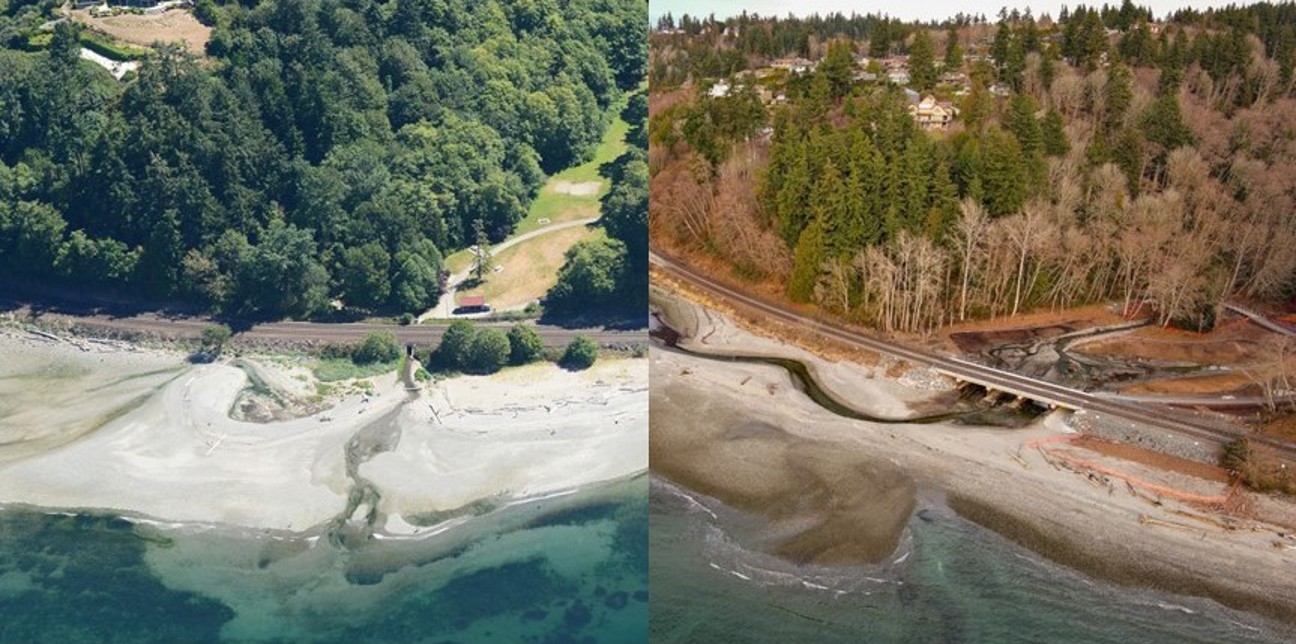
Left: Before Restoration.
Right: After Restoration.
The Meadowdale Beach and Estuary Restoration Project replaced 128 linear feet of BNSF's two-tracked, rock armored railroad embankment and the associated 6-foot wide box culvert, with a five-span railroad bridge and fencing to protect public safety and restore shoreline processes associated with Puget Sound.
Prior to restoration, the 6-foot wide culvert was used to convey the creek flow in a concrete channel with a narrow ledge for park visitors to access the beach. The culvert was too narrow to convey the water and sediment during especially high flow events. As a result, the park would flood and flows would deposit sediment on the park's lawn rather than carry it out to the beach.
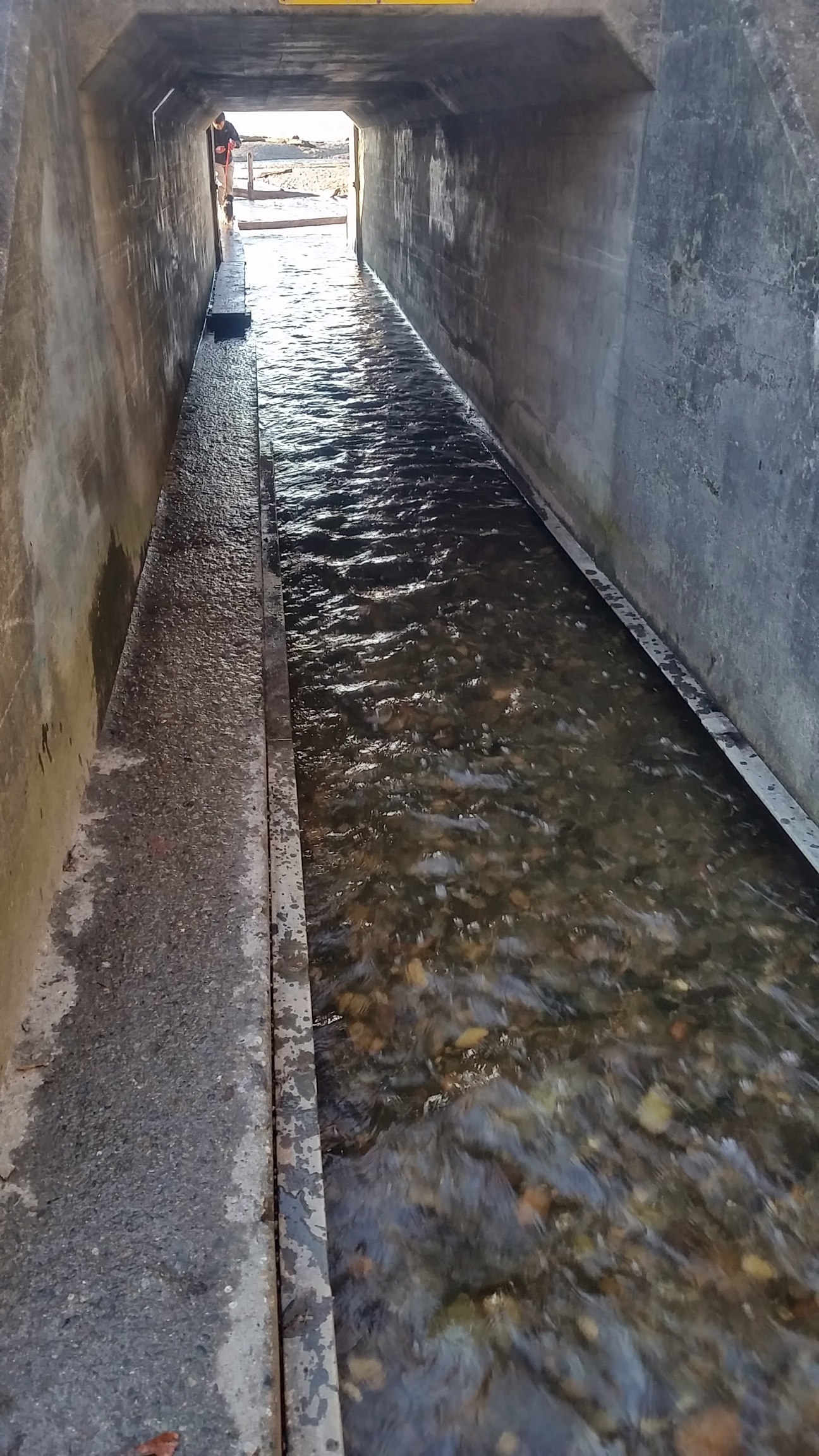
Pre-restoration view of the culvert and ledge used by park visitors to access the beach.
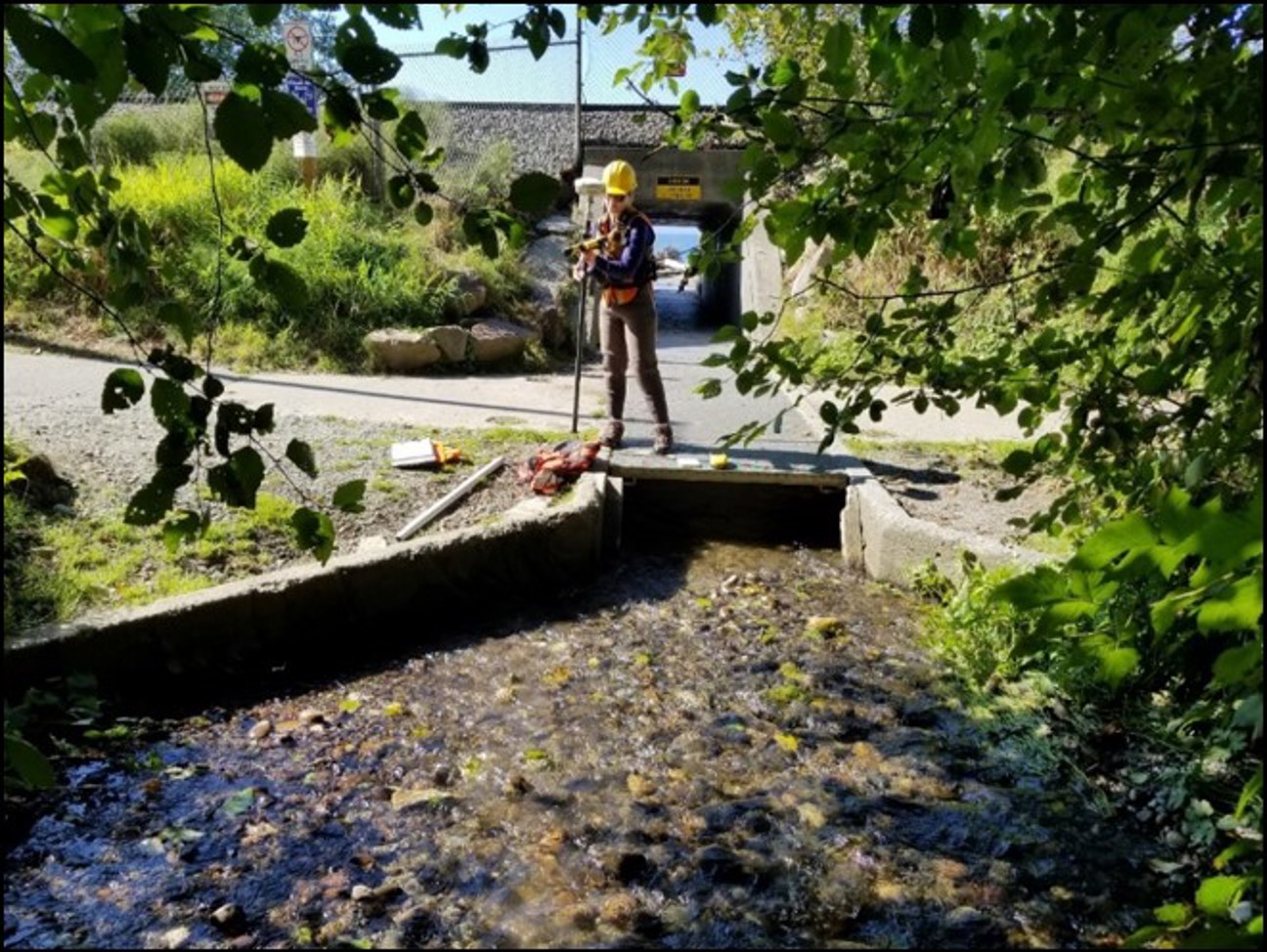
View of the culvert and associated beach access before restoration.
The combination of these factors confirmed that the culvert was undersized, as it impaired natural stream and shoreline processes, caused flooding, and degraded estuary habitats. In addition, small size of the culvert resulted in faster flows moving through it. The flows were too fast for adult and juvenile salmon to swim upstream and created a partial barrier to fish passage. The undersized culvert dated back many decades to when fish passage and stream functions were less of a priority, and less was known about the importance of independent coastal streams and estuaries like Lunds Gulch Creek.
In addition to widening the opening through the railroad embankment to restore an estuary closer in size to historic conditions, the project included the excavation of a large estuary upstream of the railroad crossing. The restored estuary provides productive rearing habitats for young salmon. This restored estuary will provide productive rearing habitat for young ESA-listed Chinook salmon, critical to their survival. As they outmigrate to the ocean, these protected species must stay close to the shoreline to feed and grow and so inhabit estuaries and small Lunds Gulch Creek. The restored estuary also provides habitat for other salmon and trout species who spawn and rear in Lunds Gulch Creek, including coho salmon, chum salmon, steelhead, and cutthroat trout. In addition, some of the other fish who reside in the nearshore habitats of Puget Sound may also use the restored estuary at times. See this website’s section with Related Documents for links to some of the scientific papers on this topic.
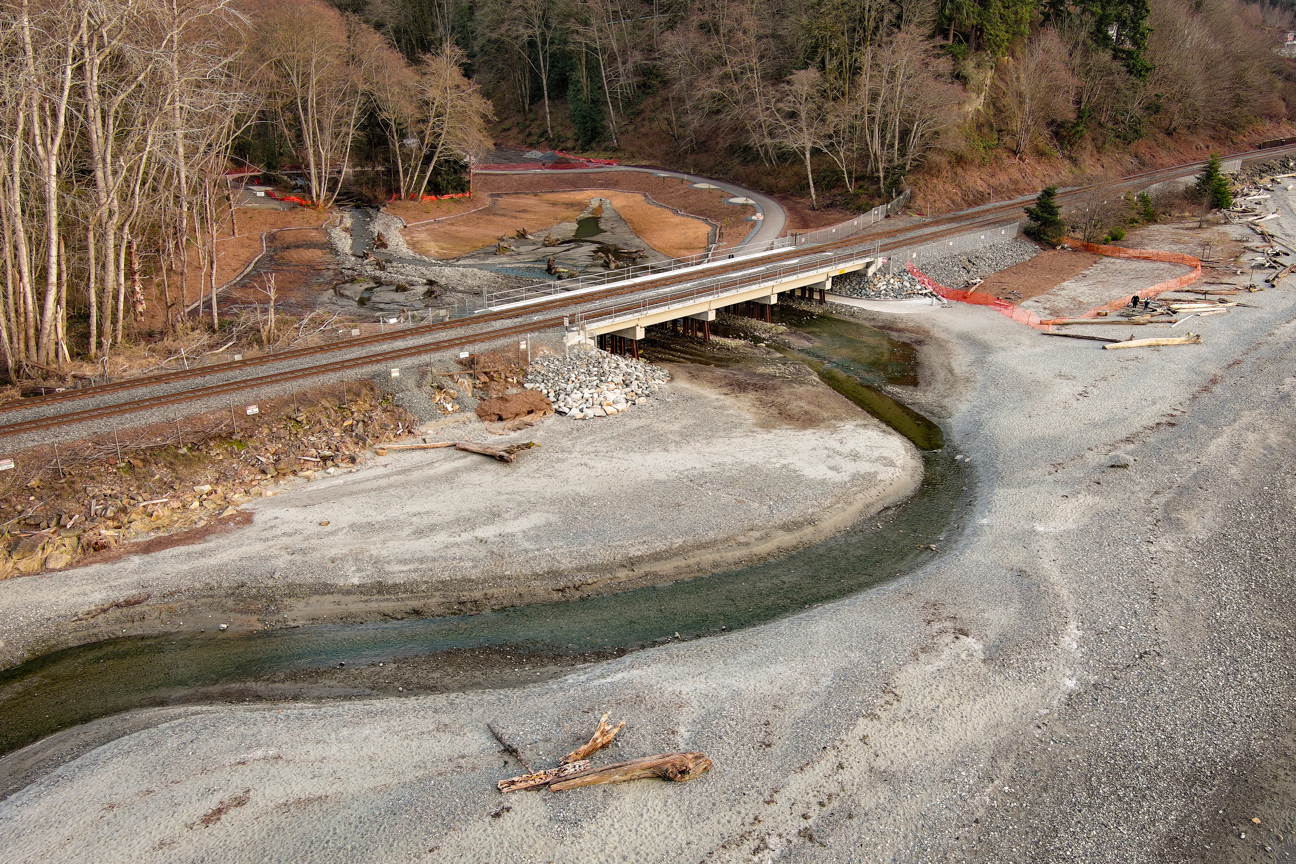
Aerial view of new bridge, restored estuary, and restored outlet channel.
The restored saltwater habitats were designed to adjust and expand over time as sea levels rise from climate change. In the initial years post construction, it is expected that a portion of the estuary will remain largely freshwater due to groundwater seepage in the area. In the coming years as sea level rises, more saltwater will flow into the estuary and the area will gradually become saltier and support more salt-tolerant vegetation.
In addition to improved nearshore habitat, site construction added a second footbridge over the Lunds Gulch Creek to provide a viewing platform of fish migration, new restrooms, improved ADA parking and a foot-wash, and picnic and benches that provide viewpoints of the beach, the estuary, and the creek.
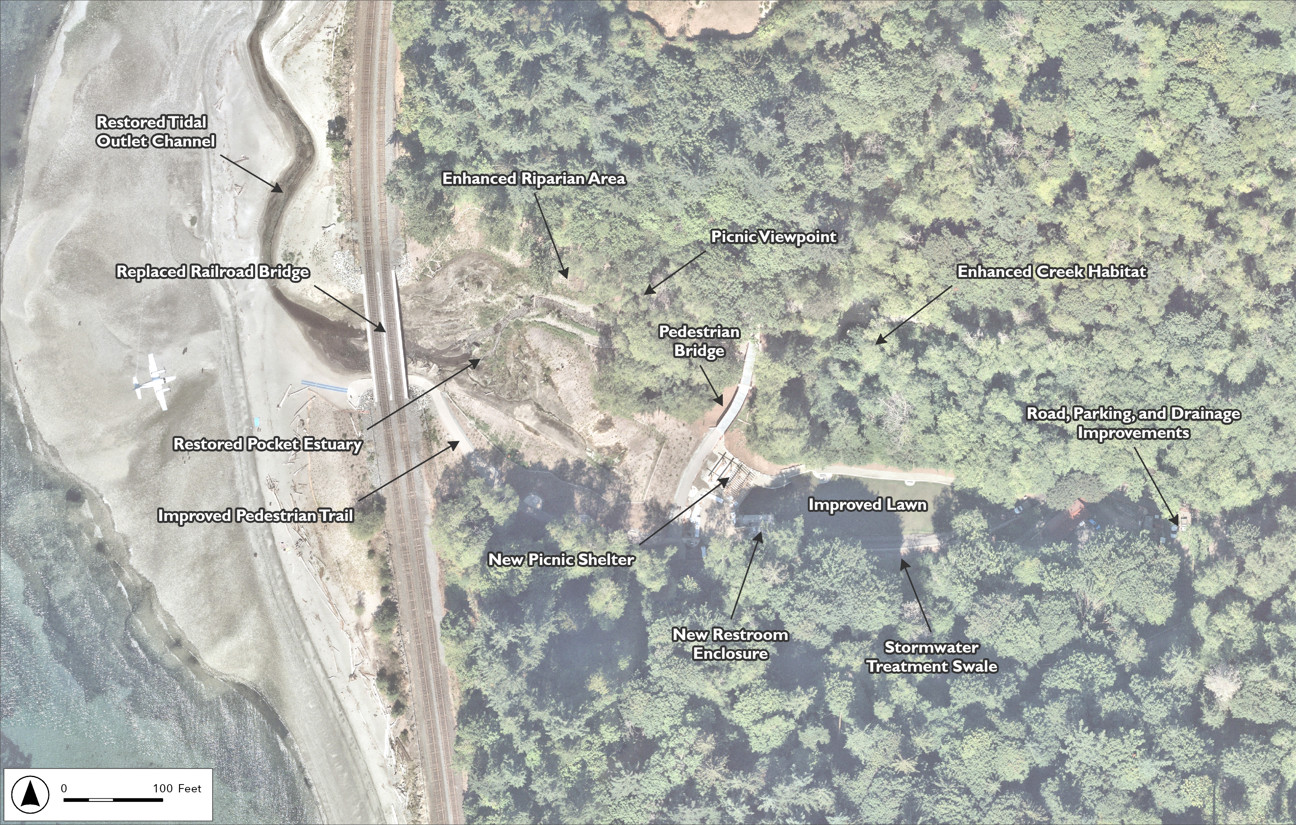
Illustrative Site Plan for the restoration
The map above provides an overview of the habitat restoration and recreational amenity improvements completed at the park. Photos of these improvements are provided below.
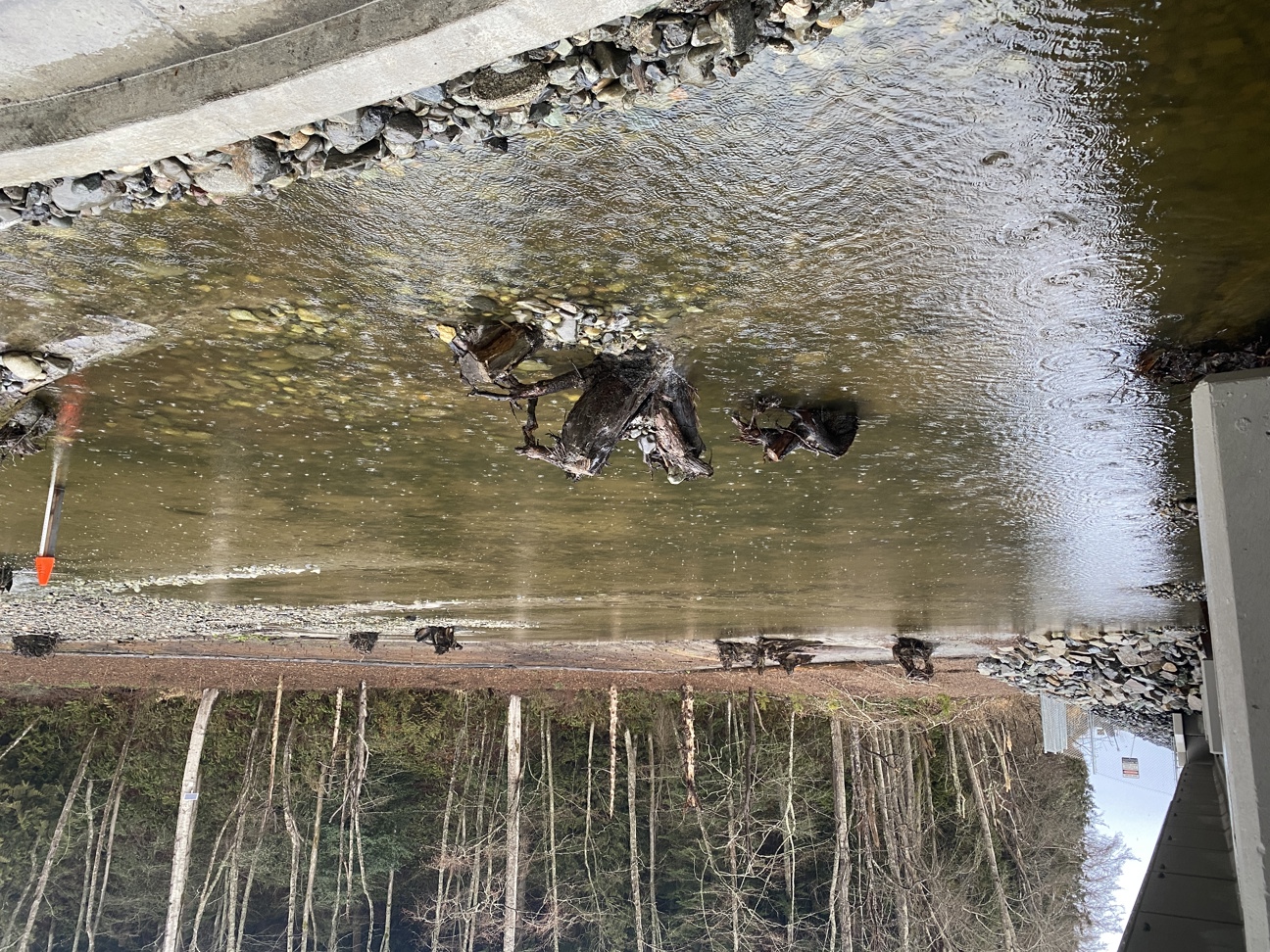
Restored estuary soon after construction.

Restored estuary one year after construction. Photo courtesy of Tulalip Tribes.
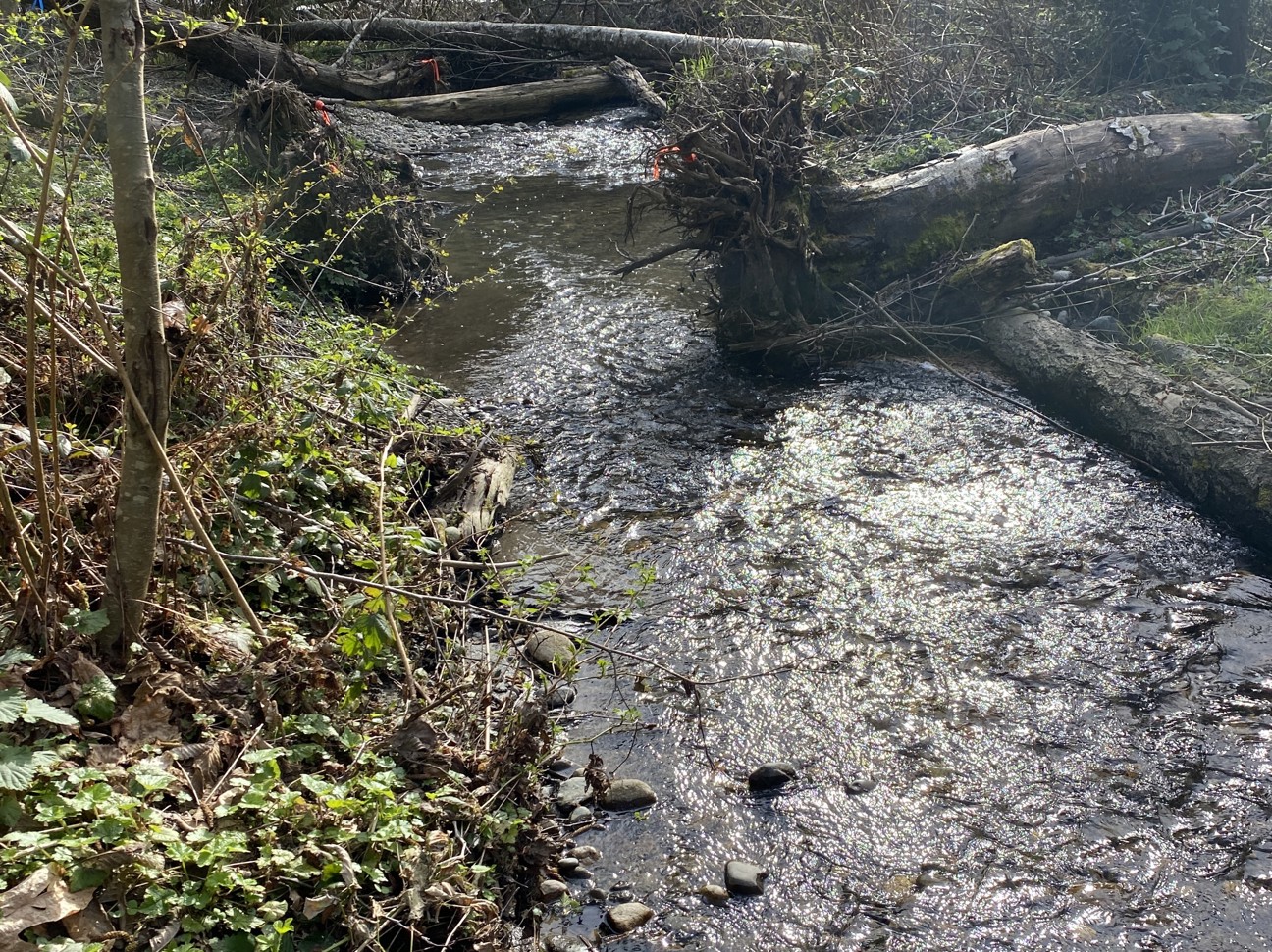
Restored stream.
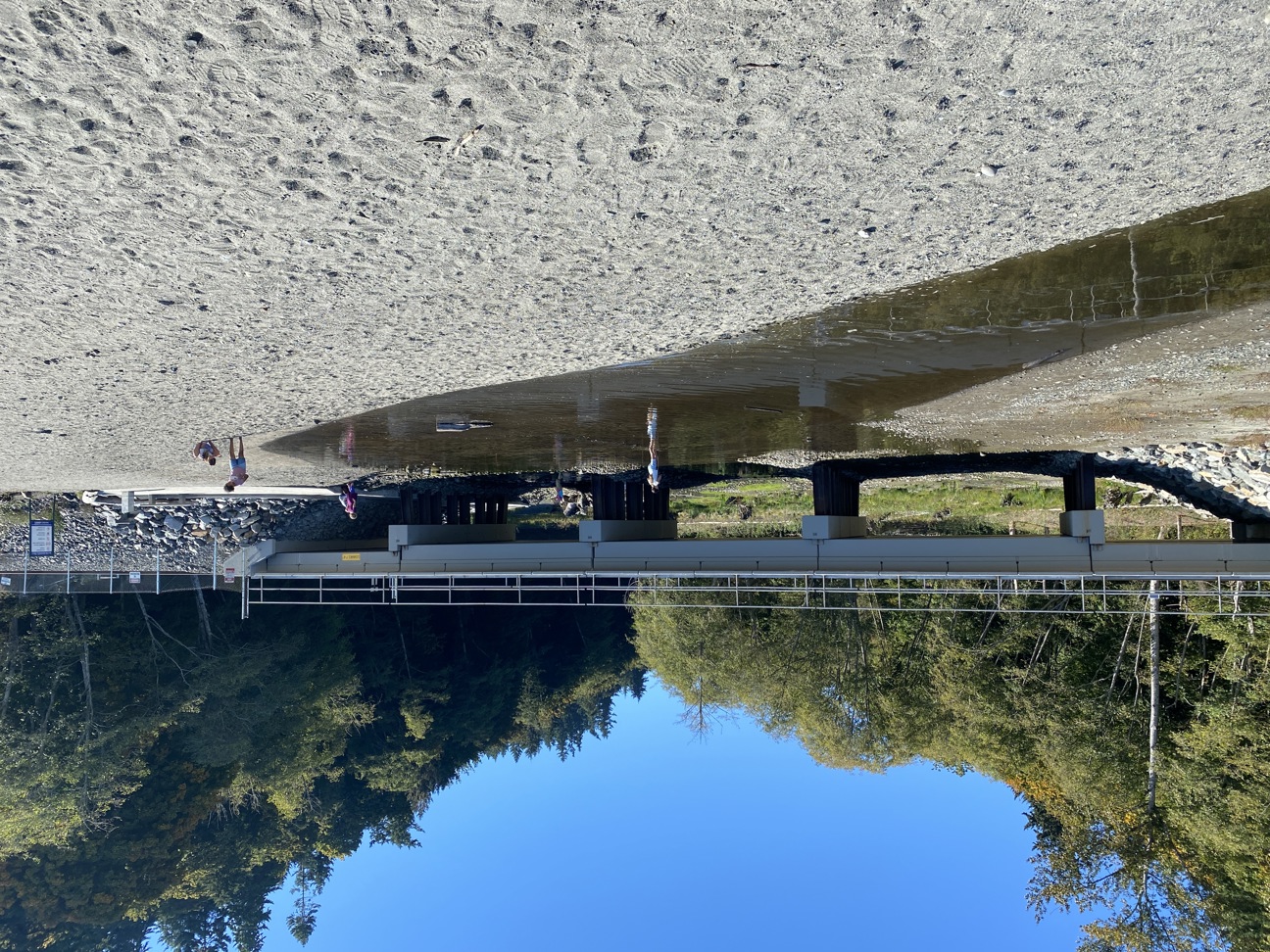
New railroad bridge and beach access.
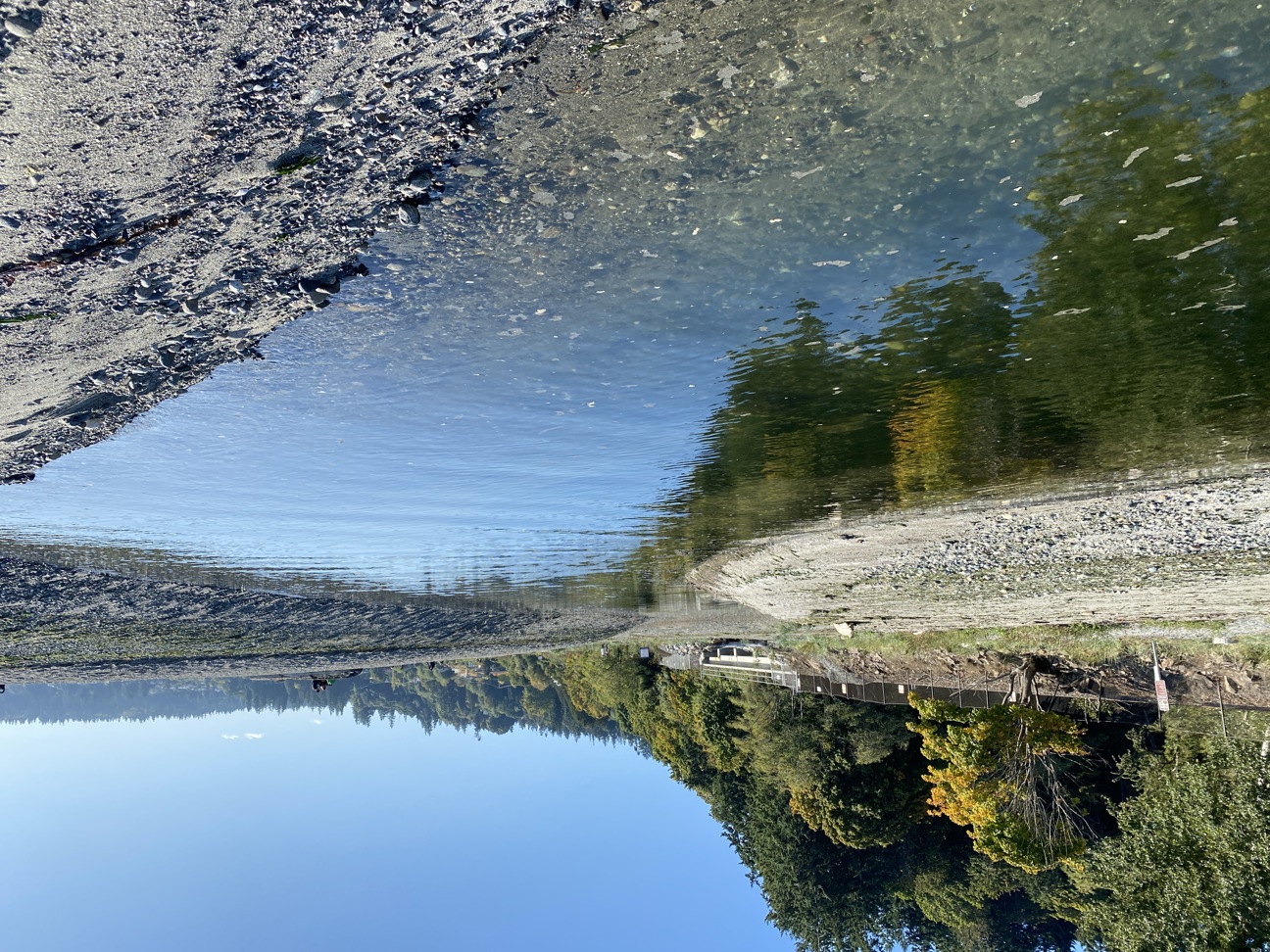
Restored tidal outlet channel.
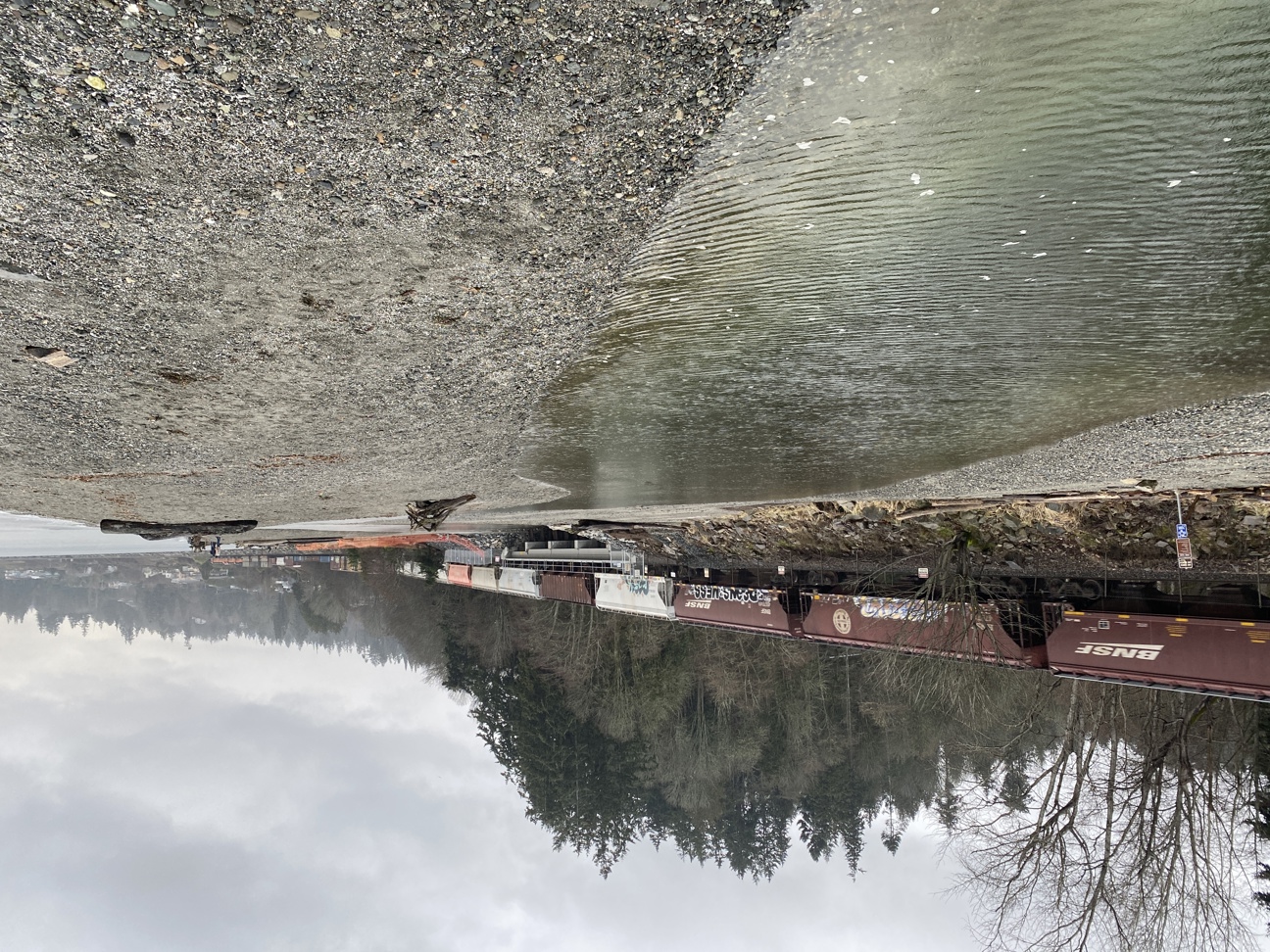
Restored tidal outlet channel at high tide.
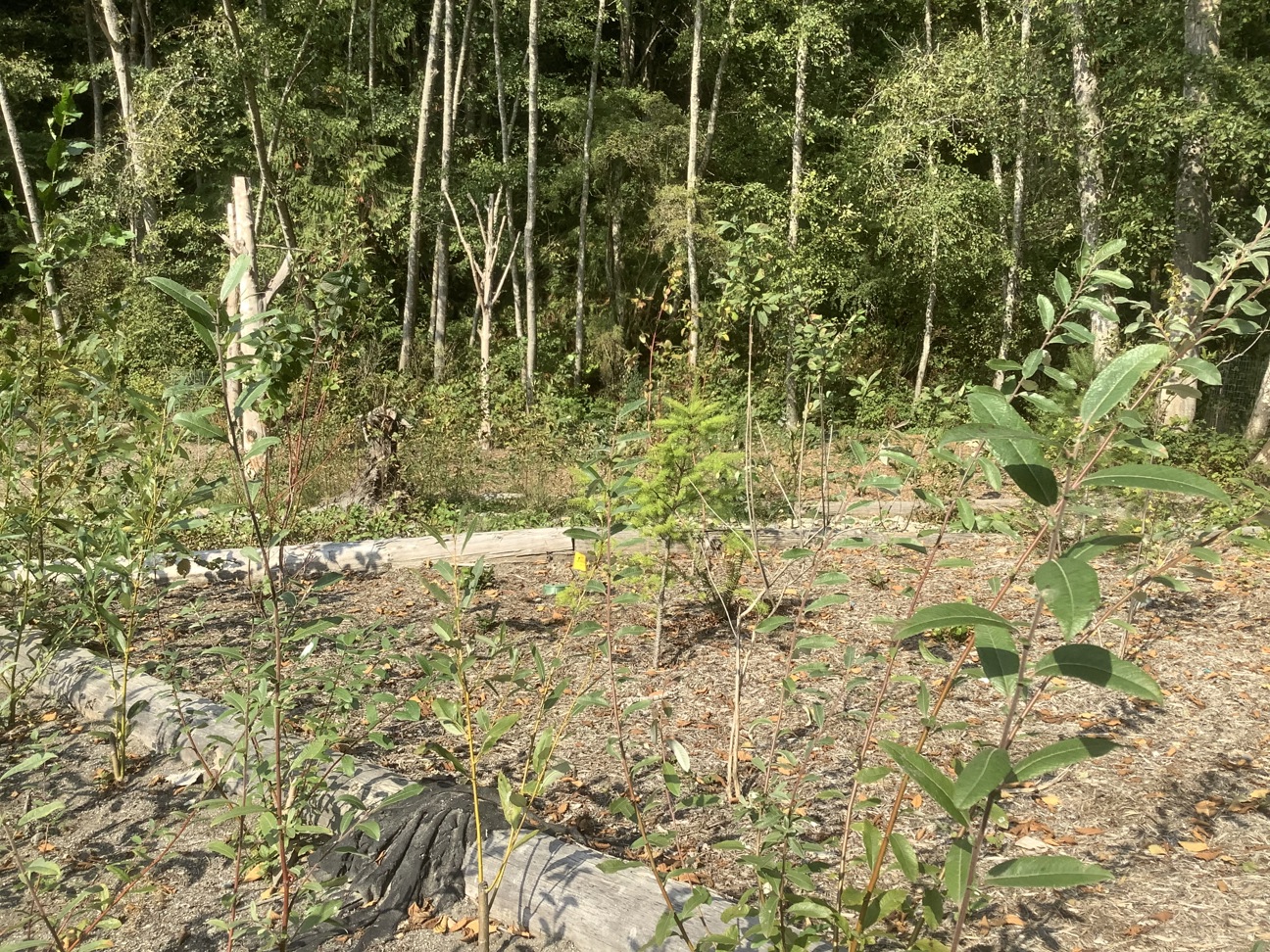
Restored riparian vegetation.
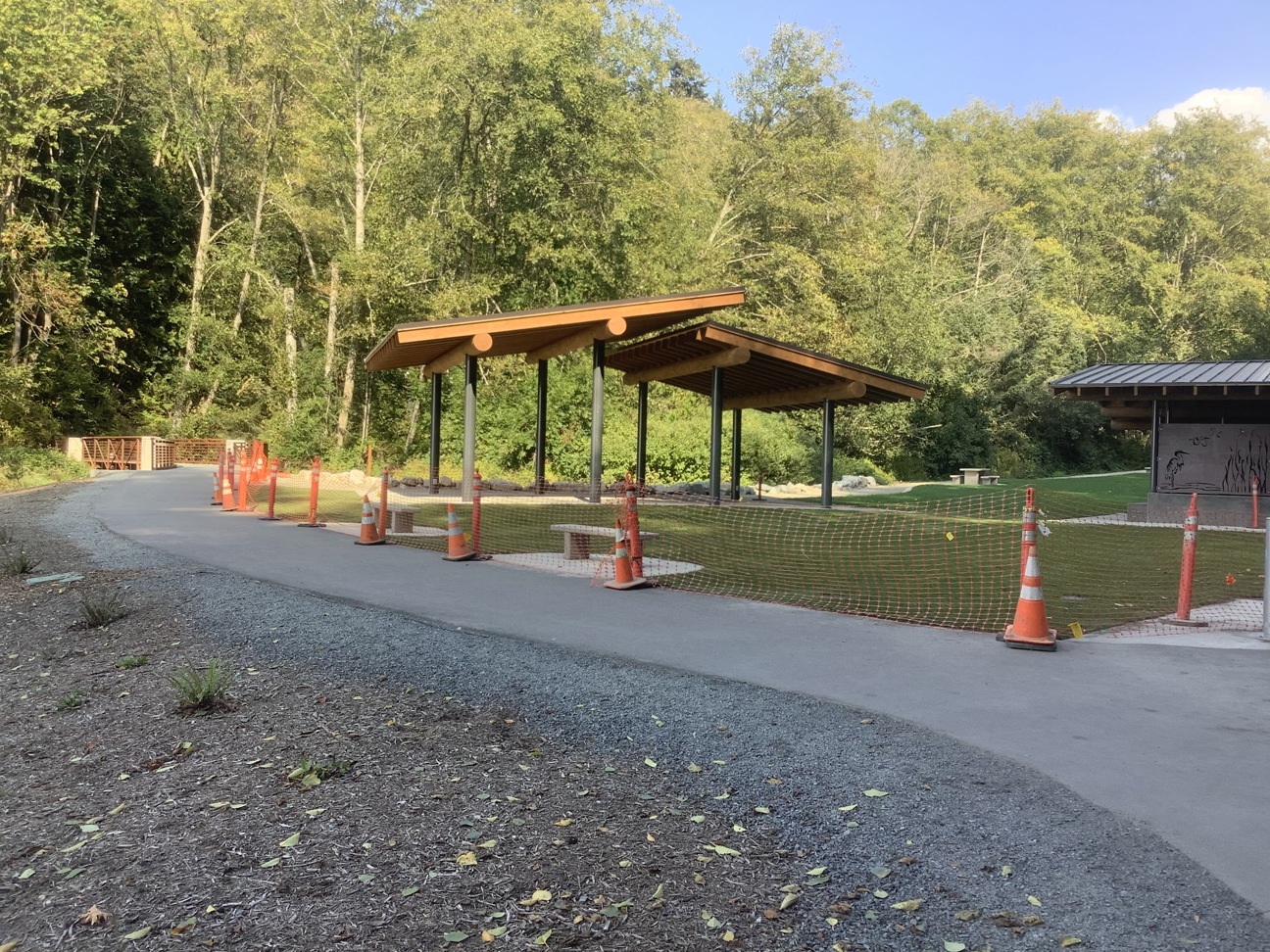
New pedestrian bridge (far left), picnic shelter (left), restroom enclosure (right), and improved lawn during construction.
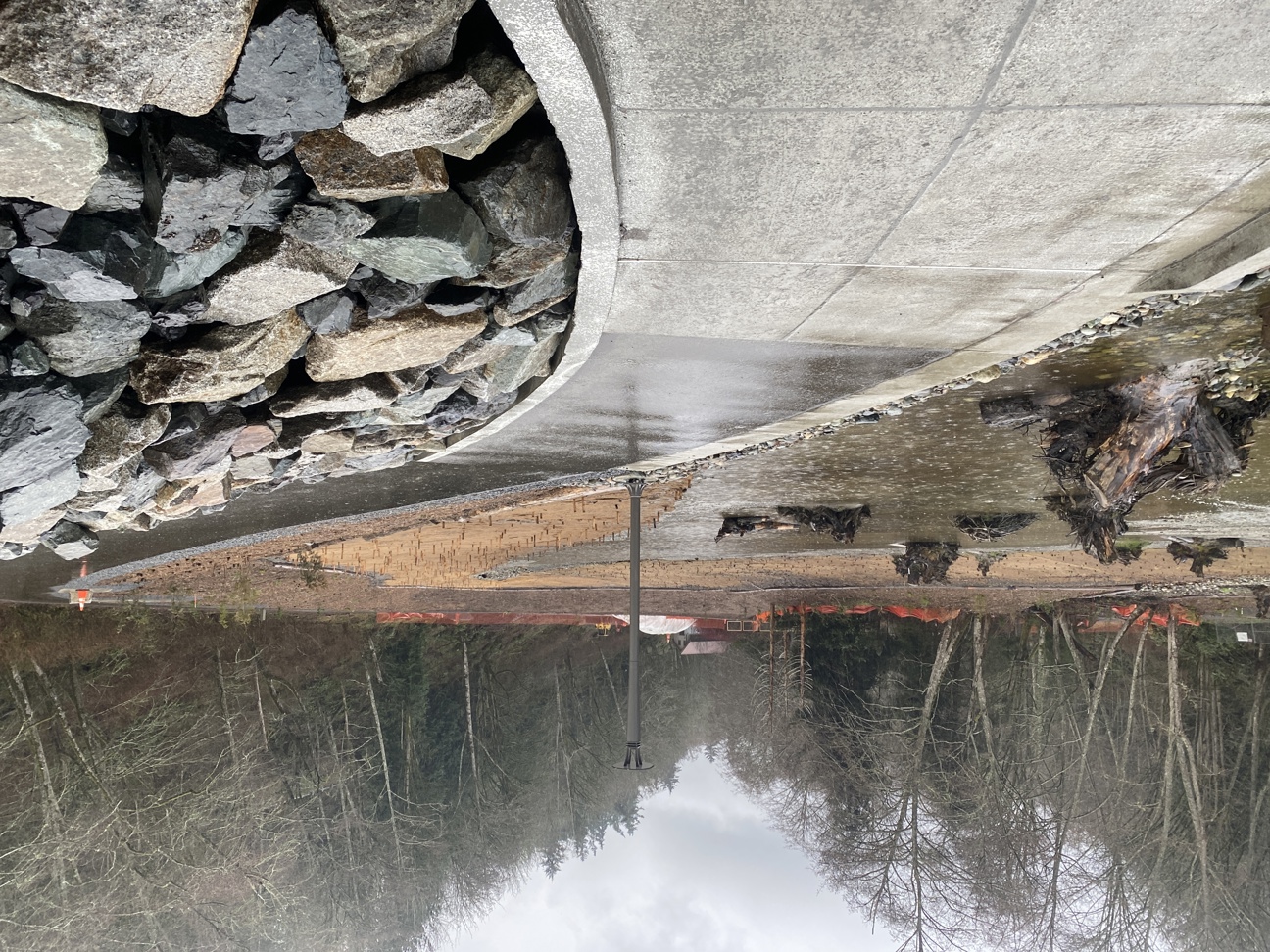
Restored pedestrian trail.
Site Changing Following Restoration
As anticipated, the site is changing over time. Most apparent is the extensive vegetation growth in the estuary transforming it from exposed soil following construction to covered with vegetation outside of the channels. The channels through the estuary continue to change as stream and tidal water carves new paths to the Salish Sea (Puget Sound). Continued change is expected in and along the stream and estuary as natural processes act on the restored habitats.
Project Significance
The Meadowdale Beach and Estuary Restoration project is regionally significant for its role in Chinook salmon recovery and Puget Sound shoreline restoration. The Salmon Recovery Plan for the Lake Washington, Cedar/Sammamish watershed (Water Resource Inventory Area 8) identified the project as a high priority action. The benefits to Chinook salmon are anticipated to extend to Southern Resident Orca whales, who rely on Chinook salmon as their main prey resource.
The project is the first Puget Sound shoreline restoration constructed that included enlarging a stream crossing under the railroad tracks along the shoreline. The installation of a wide railroad bridge to replace the undersized culverts was critical to Snohomish County Parks achieving its vision to convert park lawn areas to high functioning estuarine habitat to benefit salmon. The cooperation of BNSF and coming together of multiple interested parties was integral to the project's success. The project represents a win-win through its multiple benefits to salmon restoration, beach access for park visitors, improved safely along the railroad, and enhanced park amenities and recreational experiences.
The Restoration is Award Winning and in the News!
The Meadowdale Beach Park and Estuary Restoration project has received multiple awards for its innovative design and the commitment to natural resource stewardship that the project represents. Please see the Snohomish County Parks and Recreation website for more information on the awards and numerous press clippings
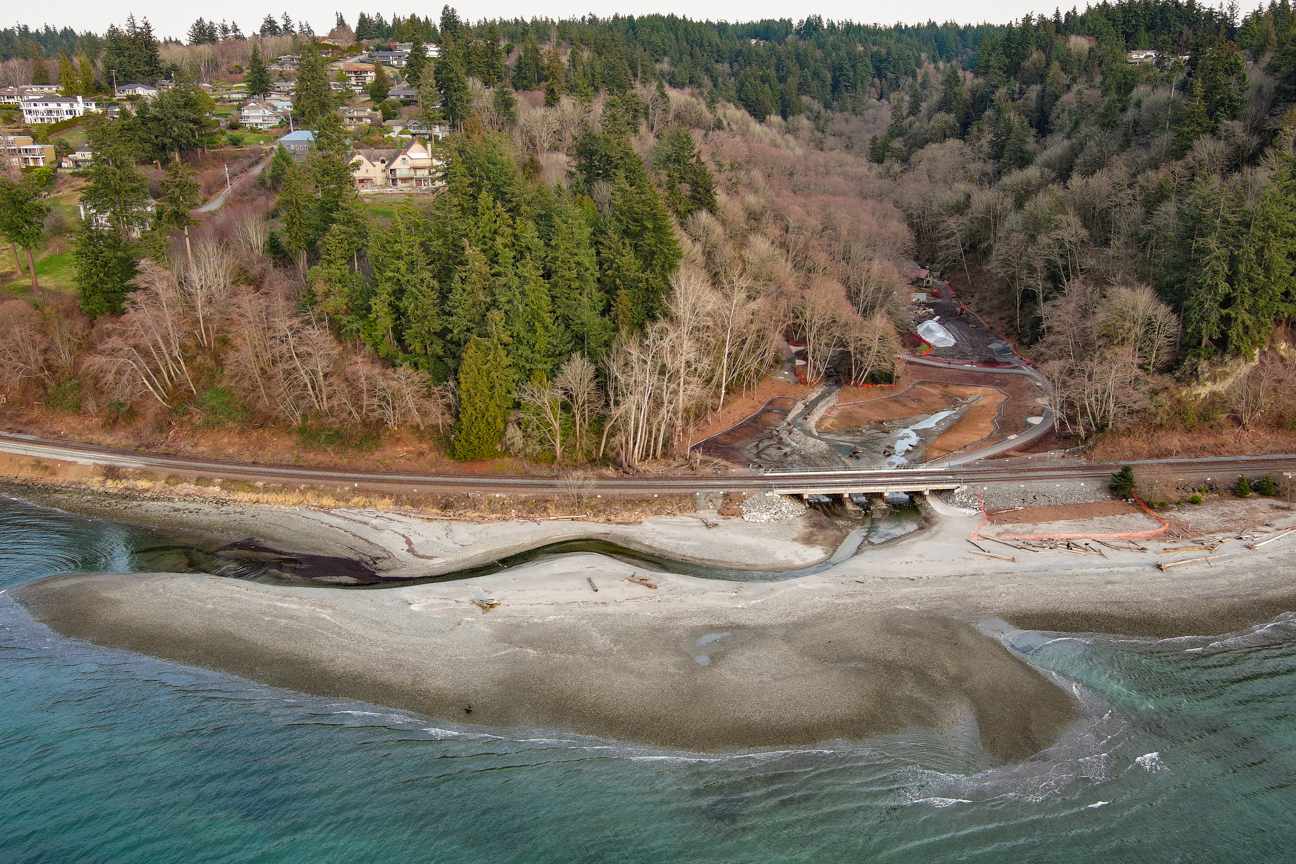
Monitoring
For information and technical documentation related to the monitoring efforts of this project, view the Restoration Monitoring Page.
Webcams
- View of estuary and beach (Credit: Tulalip Tribes)
- View of the embayment upstream of railroad (Credit: Tulalip Tribes)
Visit the Park!
- Snohomish County Parks and Recreation maintains a website that describes the features and amenities of Meadowdale Beach Park. The website link is: https://snohomishcountywa.gov/Facilities/Facility/Details/Meadowdale-Beach-Park-56
- The park is located at 6026 156th Ave SW in Edmonds, Washington.
- The park includes a gated access gate for people with disabilities. Access must be coordinated in advance using a website or application available at the parks’ website link provided above.
Contacts
For questions about the park or the restoration project, please contact Rachel Dotson or Rob Marchand of the Snohomish County Parks and Recreation Division
Rachel Dotson
Park Planning Supervisor
rachel.dotson@snoco.org
425-388-6610
Rob Marchand
Senior Park Planner
rob.marchand@snoco.org
425-388-6632
For questions about the restoration monitoring, please contact Elisa Dawson of the Snohomish County Surface Water Management and Snohomish County Marine Resources Committee.
Elisa Dawson
Senior Planner – Marine Resources
elisa.dawson@snoco.org
425-388-6466